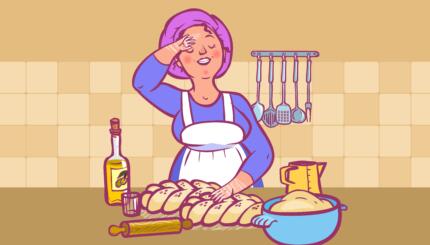Two weeks ago, I joined thousands of families around Israel for a time-honored ritual: the Saturday night grand finale of a month-long youth group extravaganza.
For one month each year, youth groups seem to take over the country. My kids spend a full month with their peers being led by well-intentioned 16- year-olds. The Saturday night performances signal the end of a month-long youth group extravaganza where my kids were never home, or when they were home, they were covered in paint. It is a month celebrating being young, getting just a bit older and loving group activities (needless to say, not all kids love group activities – my 10-year-old spent the month reading the Percy Jackson series instead).
But the final weekend is a blowout. Saturday night has the time honored daglanut (group choreographed flag waving), dances and plays. It is a doozy. Parents everywhere charge their cameras and their phones to simultaneously take pictures of their beloved children while checking their mail for hours as they sit in auditoriums, pavilions or outdoor basketball courts watching hundreds of kids perform. Each age group has a co-ed play, a boys’ dance and a girls’ dance.
At least I think it was a girls’ dance. I can’t be sure. Because it happened in the dark.
Perhaps not exactly what Bruce Springsteen had in mind when he sang, “Dancing in the Dark,” but this has become the default dance setting in this Orthodox setting. In order to be mindful both of halakhic guidelines and what I hope is a genuine attempt to empower our young women, someone somewhere thought the best way to allow girls to dance in front of an audience of both men and women was to get creative and turn off the lights. There were dances with glow sticks, dances with neon lights and ultraviolet lights. We saw a lot of glowing gloves and sticks and masks, just not a lot of our daughters.
When my daughter was four, she took ballet. She was quite adorable. At the end of the year, we sat through her final performance. As all those little pink fluffy girls danced their dance, curtsied and got off the stage, only one remained: my daughter. Completely unaware that her twenty friends had twirled off the stage, she stood there, in the spotlight. At some point, she snapped out of her reverie and raced off the stage.
I like the spotlight being on young women. I think there is value to finding ways to encourage and empower all women – young and old to be showcased, featured, and celebrated. I think that is why dance after dance in the dark left me feeling saddened and disappointed.
I need to contextualize my frustration by saying, my daughter could care less. She wasn’t upset in the least. The daglanut remains a co-ed march/dance done fully lit for everyone to see (maybe marching around waving flags to loud music isn’t considered dancing). It is only the girls’ dances that are affected. So she was proudly, giggly, visibly part of a fifty-person flag dance and an hour later I squinted trying to guess which glowing white mask was my daughter.
I recognize that this is someone’s idea of a solution, and I’m grown up enough (most of the time) to be able to articulate frustrations while not claiming to have all the answers. I get that in some Orthodox circles this is the best solution. I understand and begrudgingly respect that someone somewhere thought this would be the best solution creating a hybrid of visible and invisible young women. But in the big wide world we’re introducing our daughters to, I want more. I want her to be able to shine, in whichever way she chooses, without neon glow sticks. For me, I’m waiting for the next generation of young women to feel both empowered and visible.



